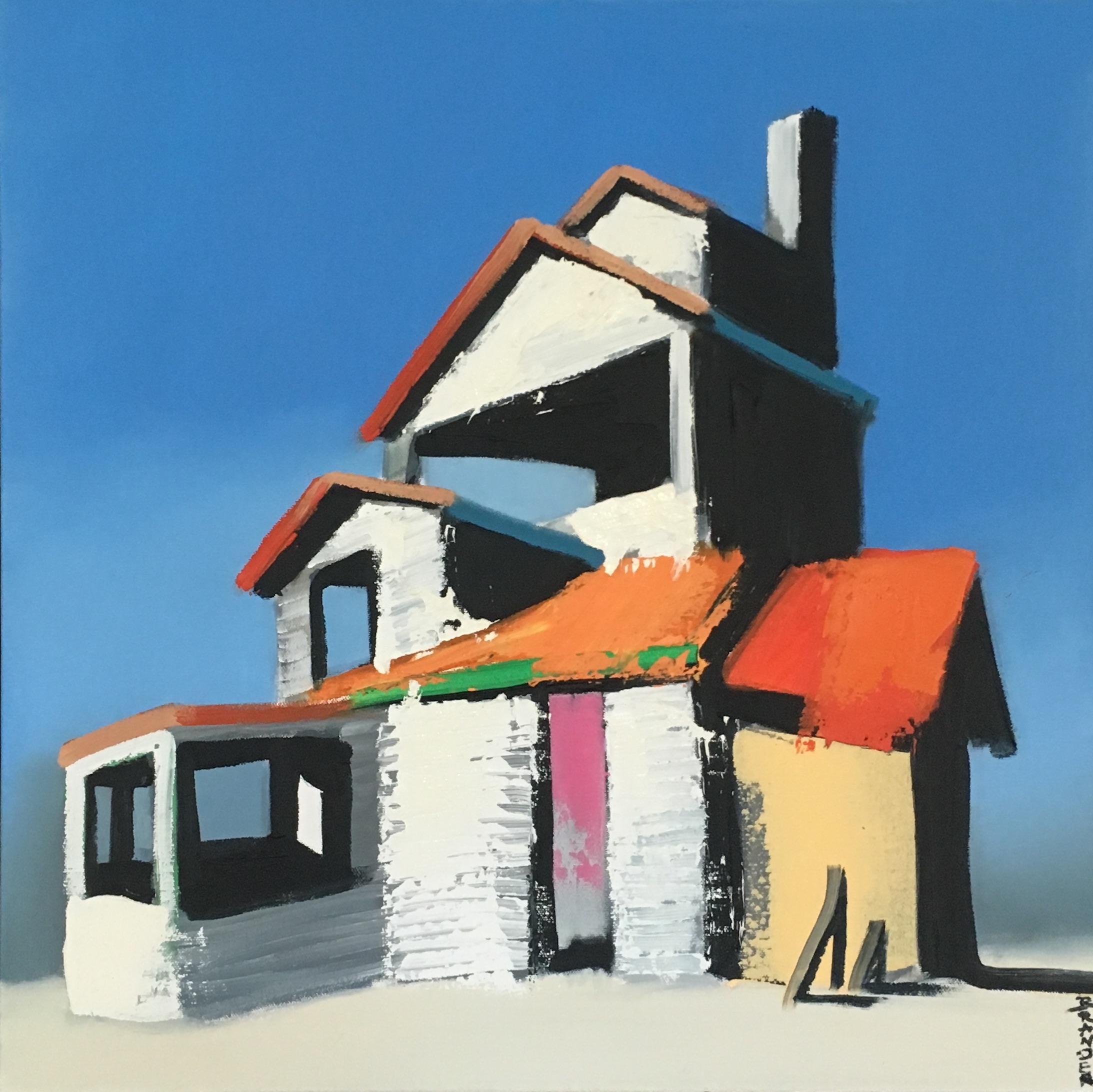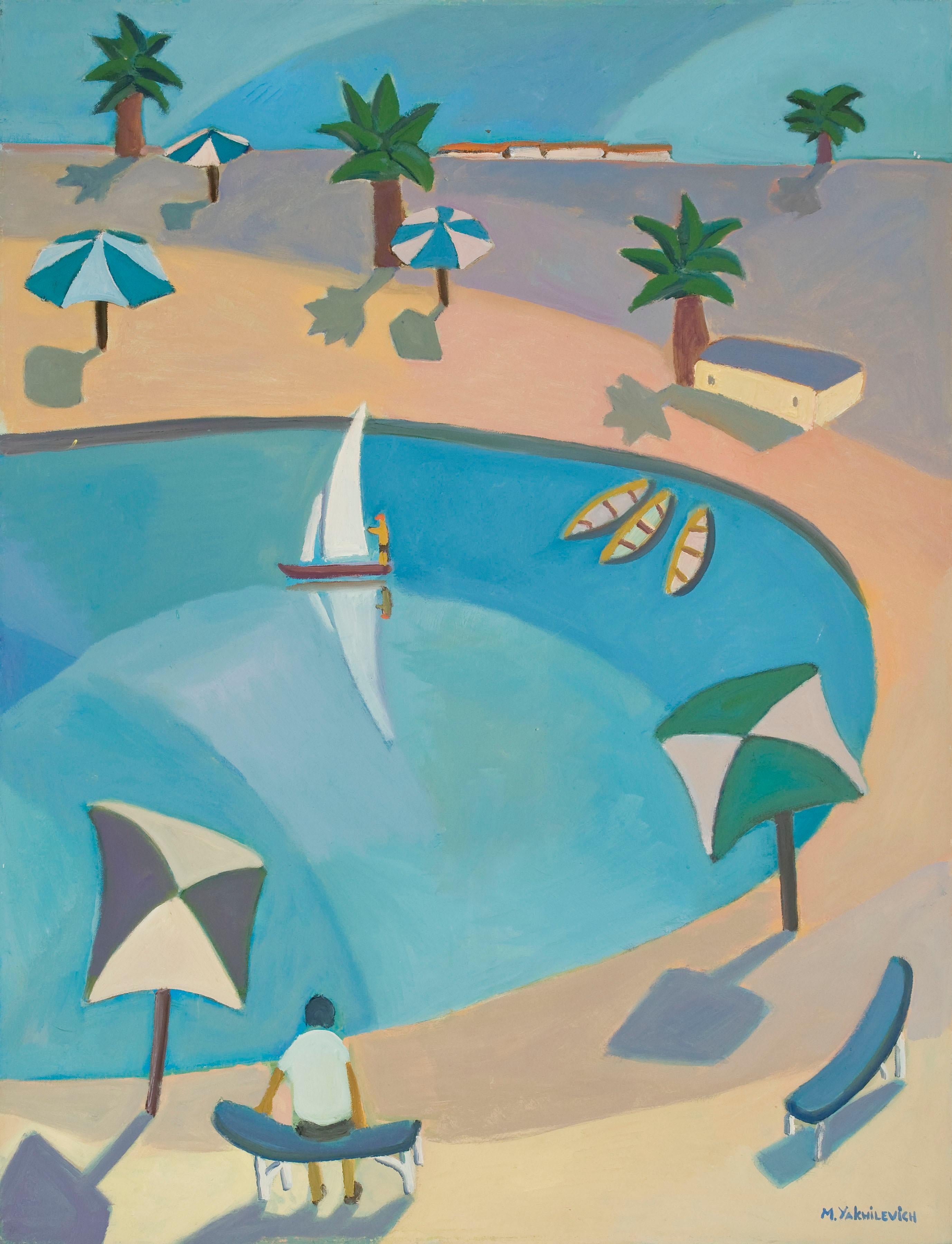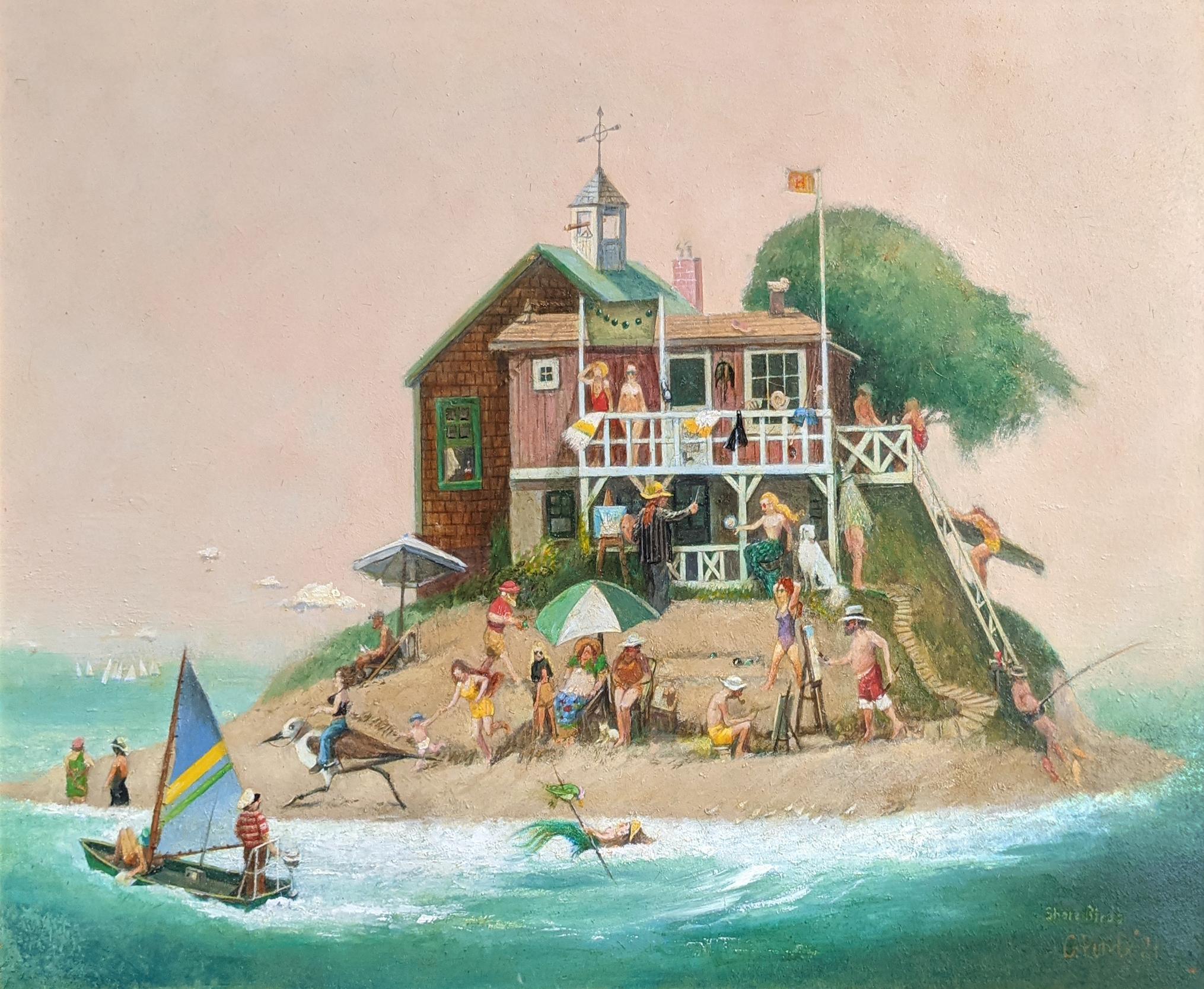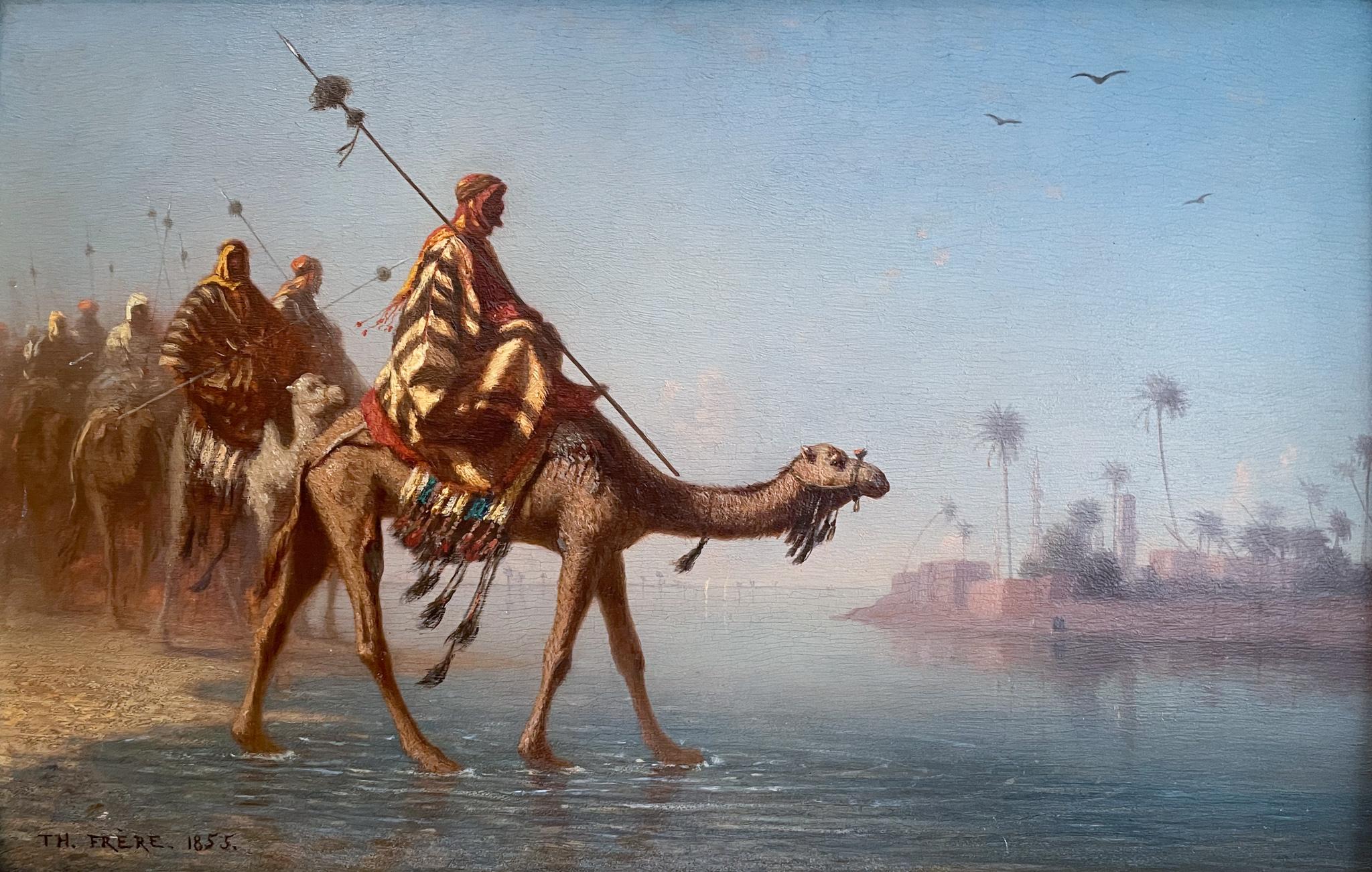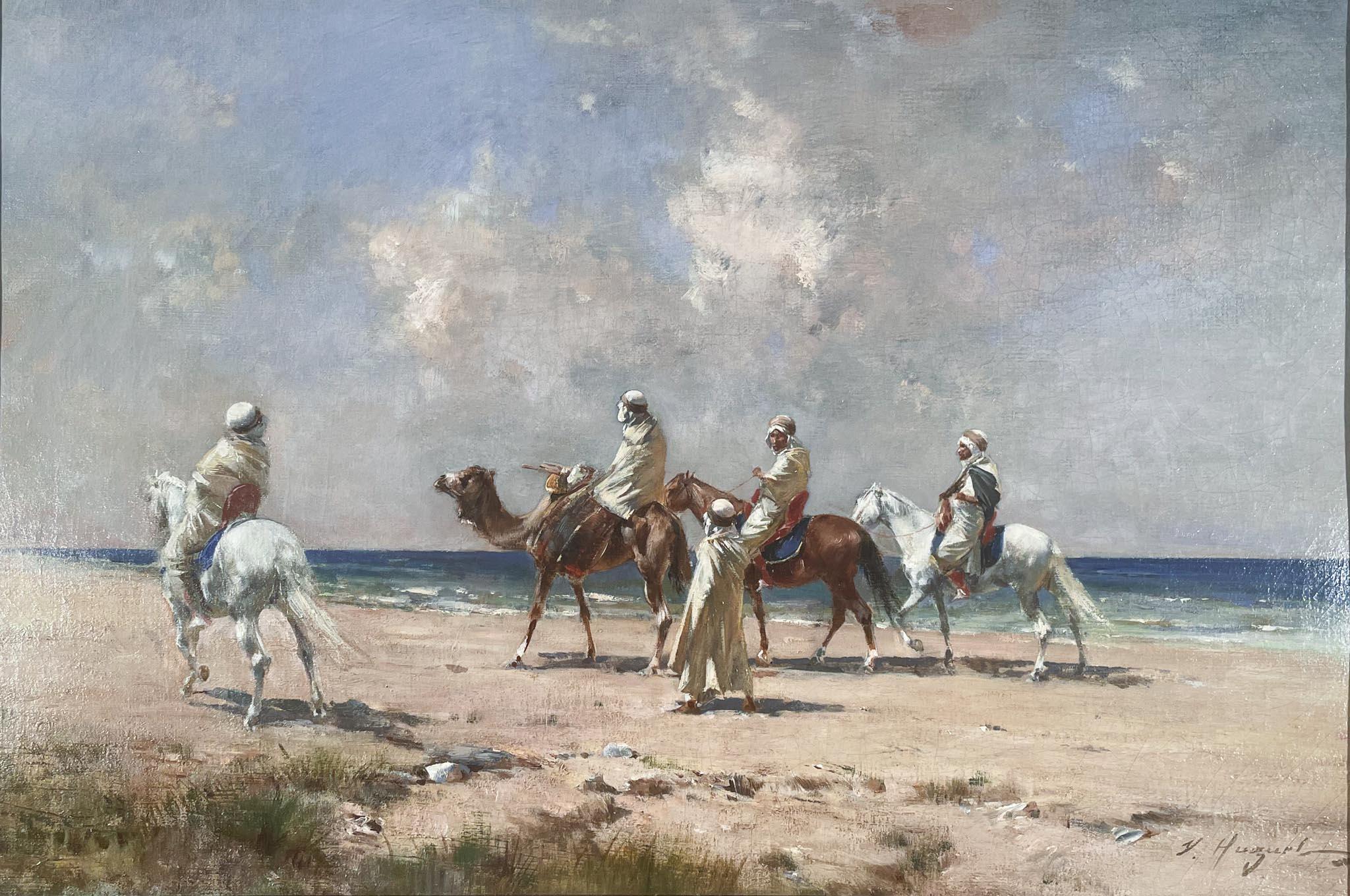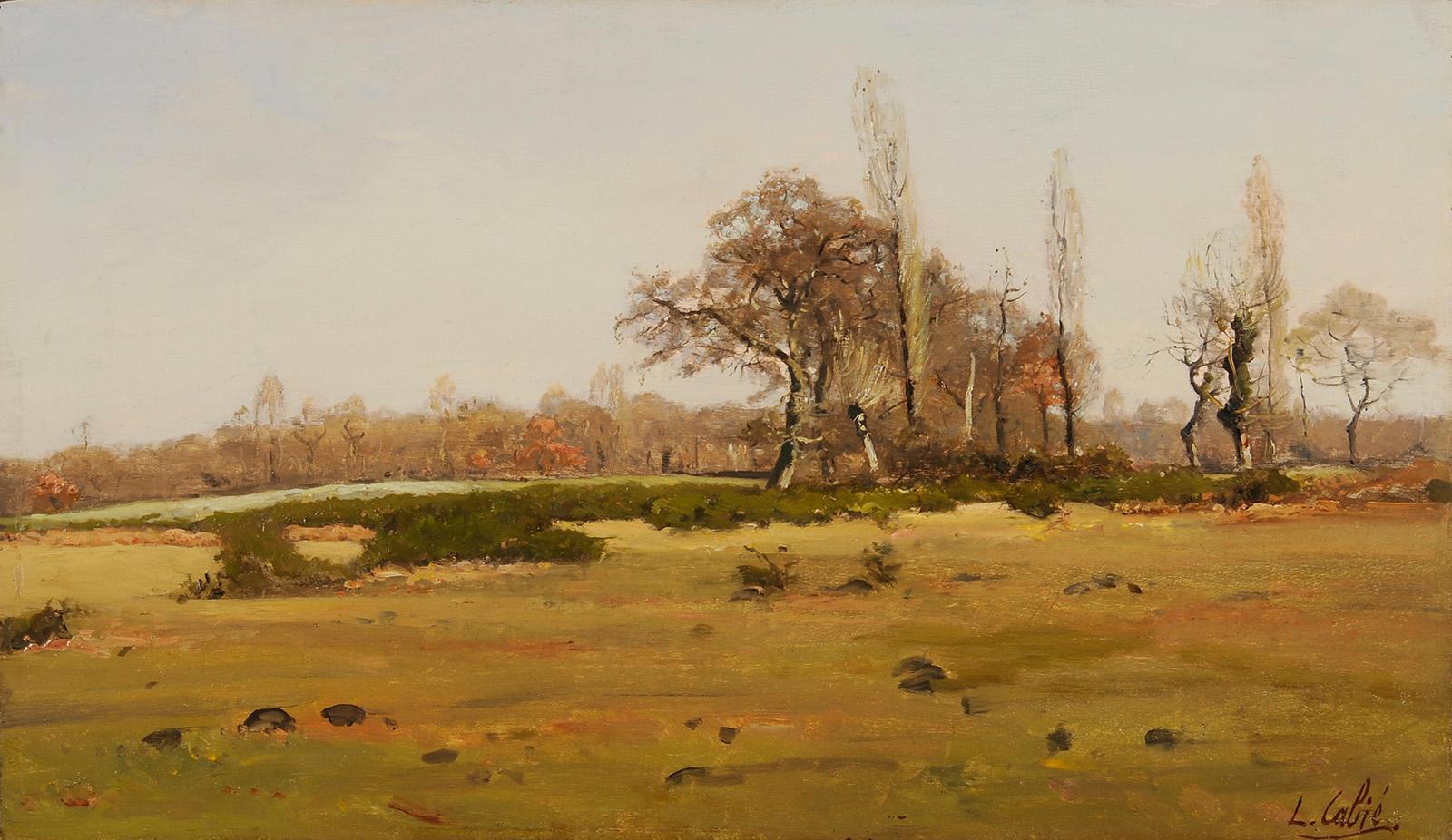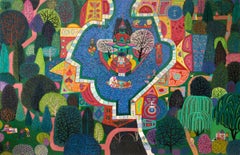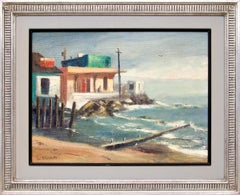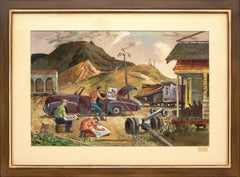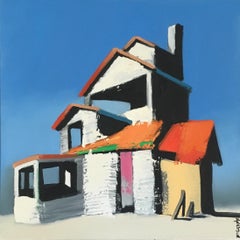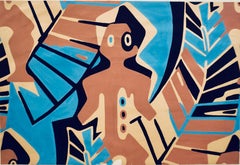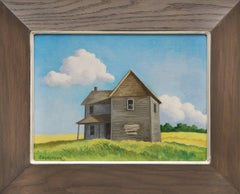
Abandoned (Colorado)
View Similar Items
Want more images or videos?
Request additional images or videos from the seller
1 of 10
William SandersonAbandoned (Colorado)
About the Item
- Creator:William Sanderson (1905-1990)
- Dimensions:Height: 13.25 in (33.66 cm)Width: 16.25 in (41.28 cm)Depth: 0.75 in (1.91 cm)
- Period:
- Condition:
- Gallery Location:Denver, CO
- Reference Number:Seller: 216621stDibs: LU2732394573
About the Seller
5.0
Platinum Seller
These expertly vetted sellers are 1stDibs' most experienced sellers and are rated highest by our customers.
Established in 1979
1stDibs seller since 2013
265 sales on 1stDibs
Typical response time: 3 hours
More From This SellerView All
- City Park, Denver, Colorado, Large Semi Abstract Colorful Oil LandscapeBy Edward MarecakLocated in Denver, COLarge format oil painting on canvas of City Park in Denver, Colorado by 20th century Denver modernist, Edward Marecak. Semi-abstract park scene with various types of trees, figures, ...Category
20th Century American Modern Landscape Paintings
MaterialsOil, Canvas
- Capitola, California, 1950s Framed California Seascape Marine Oil PaintingBy Jon BlanchetteLocated in Denver, COCapitola (California) is an oil on board painting by Jon Blanchette (1908-1987) circa 1955. Marine seascape painting with crashing waves and buildings along the coast painted in shad...Category
1950s American Impressionist Landscape Paintings
MaterialsBoard, Oil
- Artists Sketching, California, 1940s Large Modernist Gouache Landscape PaintingBy Frederick ShaneLocated in Denver, CO"Artists Sketching (California)" is an American Modernist scene of three artists working with mountains in the background. Gouache on paper, signed, titled, and dated by the artist in the lower margin. Housed in a custom frame with all archival materials measuring 25.5 x 37.5 x 1.5 inches; image dimensions measure 20.25 x 29.75 inches. Provenance: Estate of the Artist, Frederick Shane About the artist: Painter and printmaker, Missouri regionalist Frederick E. Shane specialized in genre scenes, landscapes, seascapes and portraits executed in a variety of media: oil, watercolor, mixed media, gouache, tempera and lithography. Fundamentally a realist, his work also contains some abstraction, expressionism and surrealism used in treating his subject matter. In the summers of 1925-26 Shane studied with Randall Davey at the recently-founded Broadmoor Academy in Colorado Springs. The Academy was established in 1919 by Spencer and Julie Penrose, prominent philanthropists and art patrons, who donated their family residence for the creation of a local art institution. In the 1940s and early 1950s Shane maintained his contact with Colorado Springs Fine Arts Center (the successor institution to the Broadmoor Academy in 1936). He participated in a number of its annual Artists West of the Mississippi exhibitions and also became a close friend of Boardman Robinson, the Center’s director, and visiting artist Adolph Dehn...Category
1940s American Modern Landscape Paintings
MaterialsGouache
- Sangre de Cristo Scene, Framed Taos New Mexico Mountain Landscape Oil PaintingBy Georgina KlitgaardLocated in Denver, COOriginal signed oil painting by Georgina Klitgaard (1893-1976), a Taos, New Mexico mountain landscape painting with figures walking in a meadow with ...Category
20th Century American Impressionist Landscape Paintings
MaterialsCanvas, Oil
- Golden Cycle Mill, Colorado, 1940s WPA Mining Watercolor Landscape, Black WhiteBy Charles Ragland BunnellLocated in Denver, COOriginal 1940s watercolor on paper painting by Charles Ragland Bunnell portraying a semi abstracted view of Golden Cycle Mill in Colorado Springs, Colorado. Painted in shades of black and gray. Presented in a custom black frame, outer dimensions measure 18 x 19 ½ x 1 ⅜ inches. Image sight size is 8 ⅛ x 9 ⅝ inches. Golden Cycle Mining and Reduction Company was a mining company in Colorado City (now Old Colorado City) in El Paso County, Colorado. Piece is clean and in excellent condition - please contact us for a detailed condition report. Expedited and international shipping is available - please contact us for a quote. About the artist: Artist and teacher, Charles (“Charlie”) Bunnell worked in a variety of styles throughout his career because as an artist he believed, “I’ve got to paint a thousand different ways. I don’t paint any one way.” At different times he did representational landscapes while concurrently involved with semi- or completely abstract imagery. He was one of a relatively small number of artists in Colorado successfully incorporating into their work the new trends emanating from New York and Europe after World War II. During his lifetime he generally did not attract a great deal of critical attention from museums, critics and academia. However, he personally experienced a highpoint in his career when Katherine Kuh, curator at the Art Institute of Chicago, personally chose one of his paintings – Why? - for its large exhibition of several hundred examples of abstract and surrealist art held in 1947-48, subsequently including it among the fifty pieces selected for a traveling show to ten other American museums. An only child, Bunnell developed his love of art at a young age through frequent drawing and political cartooning. In high school he was interested in baseball and golf and also was the tennis champion for Westport High School in Kansas City. Following graduation, his father moved the family to Denver, Colorado, in 1916 for a better-paying bookkeeping job, before relocating the following year to Colorado Springs to work for local businessman, Edmond C. van Diest, President of the Western Public Service Company and the Colorado Concrete Company. Bunnell would spend almost all of his adult life in Colorado Springs. In 1918 he enlisted in the United States Army, serving in the 62nd Infantry Regiment through the end of World War I. Returning home with a 10% disability, he joined the Zebulon Pike Post No. 1 of the Disabled American Veterans Association and in 1921 used the benefits from his disability to attend a class in commercial art design conducted under a government program in Colorado Springs. The following year he transferred to the Broadmoor Art Academy (founded in 1919) where he studied with William Potter and in 1923 with Birger Sandzén. Sandzén’s influence is reflected in Bunnell’s untitled Colorado landscape (1925) with a bright blue-rose palette. For several years thereafter Bunnell worked independently until returning to the Broadmoor Art Academy to study in 1927-28 with Ernest Lawson, who previously taught at the Kansas City Art Institute where Bunnell himself later taught in the summers of 1929-1930 and in 1940-41. Lawson, a landscapist and colorist, was known for his early twentieth-century connection with “The Eight” in New York, a group of forward-looking painters including Robert Henri and John Sloan whose subject matter combined a modernist style with urban-based realism. Bunnell, who won first-place awards in Lawson’s landscapes classes at the Academy, was promoted to his assistant instructor for the figure classes in the 1928-29 winter term. Lawson, who painted in what New York critic James Huneker termed a “crushed jewel” technique, enjoyed additional recognition as a member of the Committee on Foreign Exhibits that helped organize the landmark New York Armory Exhibition in 1913 in which Lawson showed and which introduced European avant-garde art to the American public. As noted in his 1964 interview for the Archives of American Art in Washington, DC, Bunnell learned the most about his teacher’s use of color by talking with him about it over Scotch as his assistant instructor. “Believe me,” Bunnell later said, “[Ernie] knew color, one of the few Americans that did.” His association with Lawson resulted in local scenes of Pikes Peak, Eleven Mile Canyon, the Gold Cycle Mine near Colorado City and other similar sites, employing built up pigments that allowed the surfaces of his canvases to shimmer with color and light. (Eleven Mile Canyon was shown in the annual juried show at the Carnegie Institute in Pittsburgh in 1928, an early recognition of his talent outside of Colorado.) At the same time, he animated his scenes of Colorado Springs locales by defining the image shapes with color and line as demonstrated in Contrasts (1929). Included in the Midwestern Artists’ Exhibition in Kansas City in 1929, it earned him the gold medal of the Kansas City Art Institute, auguring his career as a professional artist. In the 1930s Bunnell used the oil, watercolor and lithography media to create a mini-genre of Colorado’s old mining towns and mills, subject matter spurned by many local artists at the time in favor of grand mountain scenery. In contrast to his earlier images, these newer ones – both daytime and nocturnal -- such as Blue Bird Mine essentially are form studies. The conical, square and rectangular shapes of the buildings and other structures are placed in the stark, undulating terrain of the mountains and valleys devoid of any vegetation or human presence. In the mid-1930s he also used the same approach in his monochromatic lithographs titled Evolution, Late Evening, K.C. (Kansas City) and The Mill, continuing it into the next decade with his oil painting, Pikes Peak (1942). During the early 1930s he studied for a time with Boardman Robinson, director of the Broadmoor Art Academy and its successor institution, the Colorado Springs Fine Arts Center from 1930 to 1947. In 1934 Robinson gave him the mural commission under the Public Works of Art Project (PWAP) for West Junior High School in Colorado Springs, his first involvement in one of several New Deal art...Category
1940s American Modern Landscape Paintings
MaterialsPaper, Watercolor
- Storm Over Victor (Colorado Mountain Town), 1940s WPA Era Landscape Oil PaintingLocated in Denver, COOil on board painting by George Vander Sluis (1915-1984) titled Storm Over Victor (Colorado Mountain Town) from 1946. WPA Era Mountain Landscape wi...Category
1940s American Modern Landscape Paintings
MaterialsOil, Board
You May Also Like
- Atlantic Enclosure, Oil on canvas by Contemporary Scottish Artist Garry BranderBy Garry BranderLocated in Battle, East SussexAtlantic Enclosure 58x58cm including Black wooden Frame A graduate of Glasgow School of Art, Brander gained a BA (Hons) in 2011 Early on, Garry discovered an interest in old buil...Category
21st Century and Contemporary Contemporary Landscape Paintings
MaterialsOil
- A view of Sebastopol in the Crimea.Located in Paris, FRA view of Sebastopol in the Crimea. Oil on canvas. In a 19th century gild wood and plaster frame. This painting can be dated around 1830/1840 given the dresses worn by the women i...Category
1830s Realist Landscape Paintings
MaterialsOil
- Untitled: Abstract Figure and LeavesBy Gio ColucciLocated in Berlin, MDGio Colucci (Italian 1892-1974) Untitled: Abstract Figure and Leaves. Gouache on paper laid down on matt board. Archival framing under glass. Originally from the Con-Agra Corporat...Category
Early 20th Century Abstract Figurative Paintings
MaterialsGouache, Laid Paper
- Mikhail Yakhilevich, Boating, 116x89 cm, oil on canvas, minimalist paintingLocated in Jerusalem, ILMikhail Yakhilevich (Israeli, Russian) Boating 116x89 cm oil on canvas Michael Yakhilevitz was born in 1956 in Moscow. He graduated from The Stage Design Department of The Moscow Ar...Category
1990s Landscape Paintings
MaterialsCanvas, Oil
- White House, Blue RoofBy Kathleen PetersonLocated in Salt Lake City, UT"White House, Blue Roof" by Kathleen Peterson, oil, 18 X 18 inches Kathleen Peterson was born the third child of a third child to school teacher par...Category
2010s Other Art Style Landscape Paintings
MaterialsOil
- Shore BirdsLocated in Salt Lake City, UT"Shore Birds" by Gerald Purdy, oil on panel, 11 1/2 X 14 inches (framed size: 17 X 21 1/2 inches), $2,800. "I chose narrative art from the menu and have ...Category
2010s Figurative Paintings
MaterialsOil, Panel
Recently Viewed
View AllMore Ways To Browse
8 X 11 Sterling Frame
William Peabody
19th Century Painting19th Century Portraits
Alpine Meadows
Berberian Art
Bruce Cody
Cedar Creek
Drawing Retro Wildflowers
Grist Mill
Lair Paintings
Oak Carlton House
Paul Wolff
Rocky Mountain Wildflowers
Texas Ranger Art
Western Cowboy Spurs
Air Race Medal
American Impressionist William Chadwick
Antique Airship
